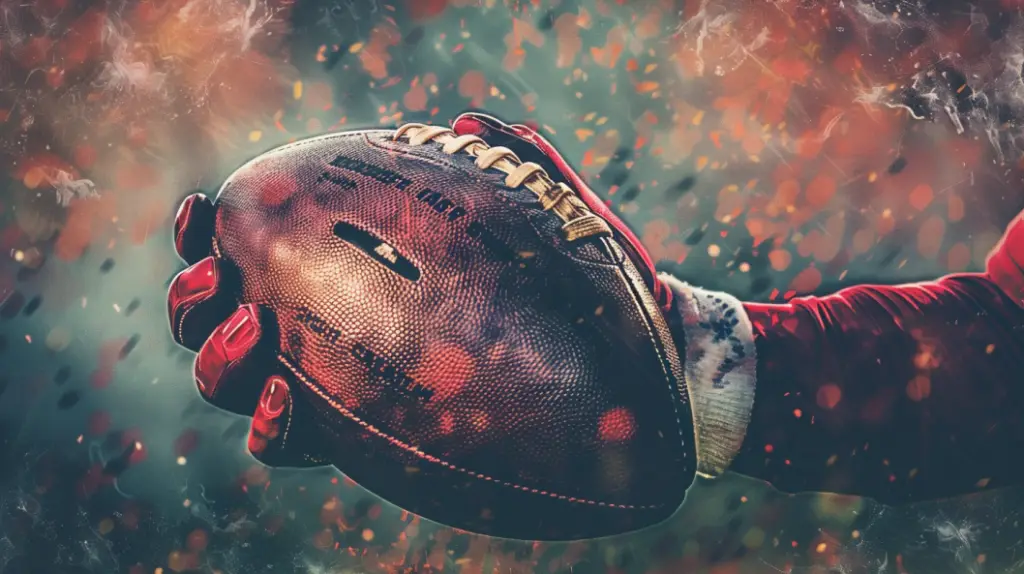The role of the goalkeeper has evolved significantly over the years. Originally, the role of the goalkeeper was simply to prevent the opposing team from scoring goals. However, as the game has evolved, so has the goalkeeper role. In modern football, goalkeepers are expected to make crucial saves and play a vital role in defensive organization, distribution, and even starting attacking plays. The importance of goalkeepers in the modern game cannot be overstated, as they are often the last line of defense and can significantly impact a match’s outcome.
The Evolution of Goalkeeping: From the Past to the Present
In the early days of football, goalkeepers were not afforded much protection or specialized equipment. They often played without gloves and had limited mobility due to heavy clothing. As a result, goalkeepers relied heavily on their reflexes and positioning to make saves. Over time, advancements in equipment and rule changes have greatly influenced the evolution of goalkeeping techniques.
The introduction of gloves in the 1880s allowed goalkeepers to grip the ball better and improved their ability to make saves. In addition, rule changes such as the back-pass rule 1992 prohibited goalkeepers from handling deliberate passes from their teammates, forcing goalkeepers to become more comfortable with their feet and develop better distribution skills.
The Role of the Modern Goalkeeper in Football Tactics
In modern football, there are two main types of goalkeepers: traditional goalkeepers and sweepkeepers. Traditional goalkeepers focus primarily on shot-stopping and organizing the defense. They are often more conservative in their positioning and rely on their reflexes and agility to make saves.
On the other hand, sweeper keepers are known for their ability to play outside of their penalty area and act as extra defenders. They are comfortable with the ball at their feet and are often involved in the build-up play from the back. Sweeper keepers are more proactive in positioning and willing to take risks to intercept through balls or make tackles outside their box.
In addition to shot-stopping and distribution, modern goalkeepers play a crucial role in defensive organization and communication. They are responsible for organizing the defense, directing their teammates, and ensuring everyone is in the right position. A vocal presence on the pitch is essential for a goalkeeper to effectively communicate with their defenders and provide instructions during the game.
Key Traits of a Successful Goalkeeper in the Modern Game
Shot-stopping ability is perhaps the most important trait for a goalkeeper in the modern game. A goalkeeper’s primary responsibility is to prevent goals, and their ability to make crucial saves can often be the difference between winning and losing. Shot-stopping requires a combination of reflexes, agility, and positioning.
Decision-making skills are also crucial for a goalkeeper. They must be able to quickly assess situations and make split-second decisions on whether to come off their line, stay on their line, or make a save. Good decision-making can help prevent goals and keep the defense organized.
Physical attributes and fitness are also important for goalkeepers. They need to have good strength, agility, and endurance to be able to make saves throughout the game. Goalkeepers must also be mentally strong and can stay focused for the entire match duration.
The Importance of Communication and Leadership for Goalkeepers
Communication is a vital aspect of a goalkeeper’s role on the pitch. They are often referred to as the “eyes and ears” of the defense, as they have a clear view of the entire field and can provide valuable information to their teammates. Organizing the defense is one of the key responsibilities of a goalkeeper, and effective communication is essential for this task.
A vocal presence on the pitch is also important for a goalkeeper. They need to be able to command their area, assert themselves in aerial duels, and provide instructions to their defenders. A confident and authoritative voice can help instill trust and confidence in the defense.
Building trust with teammates is another crucial aspect of a goalkeeper’s role. They must develop a strong relationship with their defenders and establish a sense of understanding and cohesion. Trust between goalkeepers and defenders can improve communication, coordination, and solid defense.
The Art of Shot Stopping: Techniques and Training for Goalkeepers
Shot-stopping is the bread and butter of a goalkeeper’s role. There are several different types of saves that goalkeepers need to master, including diving saves, reflex saves, one-on-one saves, and highball saves. Each type of save requires different techniques and positioning.
Footwork and positioning are key components of shot-stopping. A goalkeeper needs quick feet to move laterally and get into the right position to make a save. Proper positioning is crucial for maximizing the chances of making a save and minimizing the angles for the attacker.
Training drills are essential for goalkeepers to improve their shot-stopping ability. These drills focus on improving reflexes, agility, positioning, and decision-making. For example, reaction drills can help goalkeepers improve their reflexes by forcing them to react quickly to shots from different angles.
The Sweeper Keeper: How Modern Goalkeepers Can Contribute to Attacking Play
In recent years, there has been a growing trend of goalkeepers who are exceptional shot-stoppers and contribute significantly to attacking play. Sweeper keepers are known for their ability to start attacks from the back by playing accurate long passes or initiating quick counter-attacks.
Decision-making and passing ability are crucial for sweeper keepers. They need to be able to assess the situation and decide whether to play a short pass to a nearby teammate or a long ball to a forward. Accurate passing can help bypass the opposition’s press and create scoring opportunities for their team.
Several modern goalkeepers have excelled in the sweeper-keeper role, including Manuel Neuer of Bayern Munich and Alisson Becker of Liverpool. These goalkeepers have revolutionized the position by showcasing their ability to contribute to attacking play while maintaining their defensive responsibilities.
The Role of Goalkeepers in Defending Set Pieces and Crosses
Defending set pieces and crosses is another important aspect of a goalkeeper’s role. They need good positioning and anticipation skills to deal with high balls and crosses into the box. Communication with defenders is crucial for organizing the defense and ensuring everyone marks their opponents.
Positioning and anticipation are key for goalkeepers when defending set pieces and crosses. They need to be able to read the ball’s flight, anticipate where it will land, and position themselves accordingly. Good positioning can help goalkeepers intercept crosses or make saves from close range.
Communication with defenders is essential for defending set pieces and crosses. Goalkeepers need to be able to communicate with their defenders effectively, provide instructions on marking assignments, and alert them to potential threats. Clear communication can help prevent defensive breakdowns and ensure everyone is on the same page.
The Growing Importance of Data Analysis for Goalkeepers
Data analysis has become integral to football in recent years, and goalkeeping is no exception. The use of technology in analyzing performance has allowed goalkeepers to track metrics such as save percentage, distribution accuracy, and even positioning. This data can provide valuable insights into a goalkeeper’s strengths and weaknesses, allowing them to improve their game.
Tracking metrics such as save percentage can help goalkeepers identify areas to improve. For example, if a goalkeeper has a low save percentage on shots from outside the box, they can work on their positioning and decision-making to better anticipate long-range shots.
Incorporating data analysis into training and preparation can also help goalkeepers make more informed decisions on the pitch. By analyzing the opposition’s shooting patterns or tendencies, goalkeepers can adjust their positioning and be better prepared to make saves.
The Future of Goalkeeping: Technological Advancements and Innovation
The future of goalkeeping looks promising, with potential advancements in equipment and training methods. Goalkeepers could benefit from advancements in glove technology, such as improved grip and protection. In addition, advancements in training methods, such as virtual reality, could help goalkeepers simulate game situations and improve their decision-making skills.
Virtual reality technology has already been used in training for outfield players and could also be adapted for goalkeepers. Goalkeepers can improve their decision-making skills and better anticipate by simulating different scenarios and game situations.
Innovation will continue to play a significant role in the evolution of the goalkeeper position. As the game becomes more data-driven, goalkeepers will have access to more advanced analytics tools that can provide valuable insights into their performance. This data-driven approach can help goalkeepers make more informed decisions on the pitch and continue to improve their game.
The Mental Game: Strategies for Goalkeepers to Stay Focused and Confident
The mental aspect of goalkeeping is often overlooked but is crucial for success in the position. Goalkeepers face immense pressure and are usually scrutinized for any mistakes. Goalkeepers need to develop strategies to stay focused and confident throughout a match.
Dealing with pressure and mistakes is a key challenge for goalkeepers. They need the mental strength to bounce back from errors without affecting their performance. Developing resilience and a short memory can help goalkeepers stay focused and confident even after making mistakes.
Mental preparation and visualization are also crucial for goalkeepers. They can use techniques such as visualization to rehearse different scenarios and visualize themselves making successful saves mentally. This can help build confidence and improve performance on the pitch.
Building confidence through training and experience is another crucial mental game aspect for goalkeepers. By consistently putting in the work on the training ground and gaining expertise in matches, goalkeepers can develop a strong belief in their abilities and perform at their best when it matters most.
Goalkeepers play a vital role in modern football. They make crucial saves and contribute to defensive organization, distribution, and even attacking play. The evolution of goalkeeping techniques, advancements in equipment, and the growing importance of data analysis have all influenced the role of the goalkeeper.
Key traits of a successful goalkeeper in the modern game include shot-stopping ability, decision-making skills, physical attributes, and fitness. Communication and leadership are also crucial for goalkeepers to effectively organize the defense and build trust with their teammates.
The future of goalkeeping looks promising, with potential advancements in equipment, training methods, and technology. Goalkeepers will continue to play a crucial role in the game, and their impact on matches will only grow. With the right combination of technical ability, mental strength, and leadership skills, goalkeepers can be the difference-makers for their teams.
If you’re interested in learning more about the evolving role of the modern goalkeeper in football tactics, you might find this article on kicka.football fascinating. It delves into the various strategies and techniques that goalkeepers employ today, highlighting their crucial role in defense and offense. From mastering distribution skills to commanding the penalty area, this article provides valuable insights into how goalkeepers have adapted to the changing dynamics of the sport. Check it out here for a deeper understanding of the modern goalkeeper’s tactical prowess.






